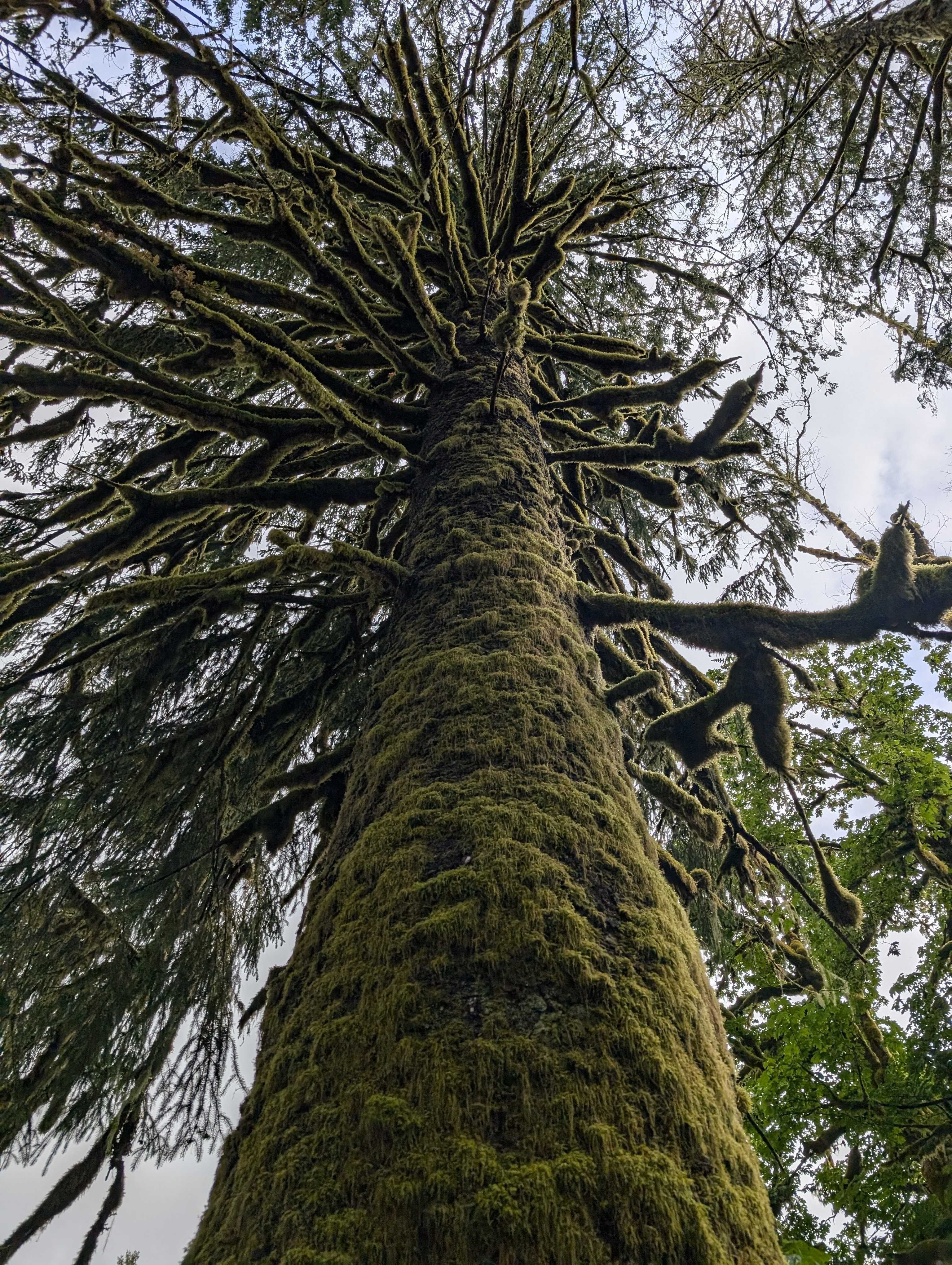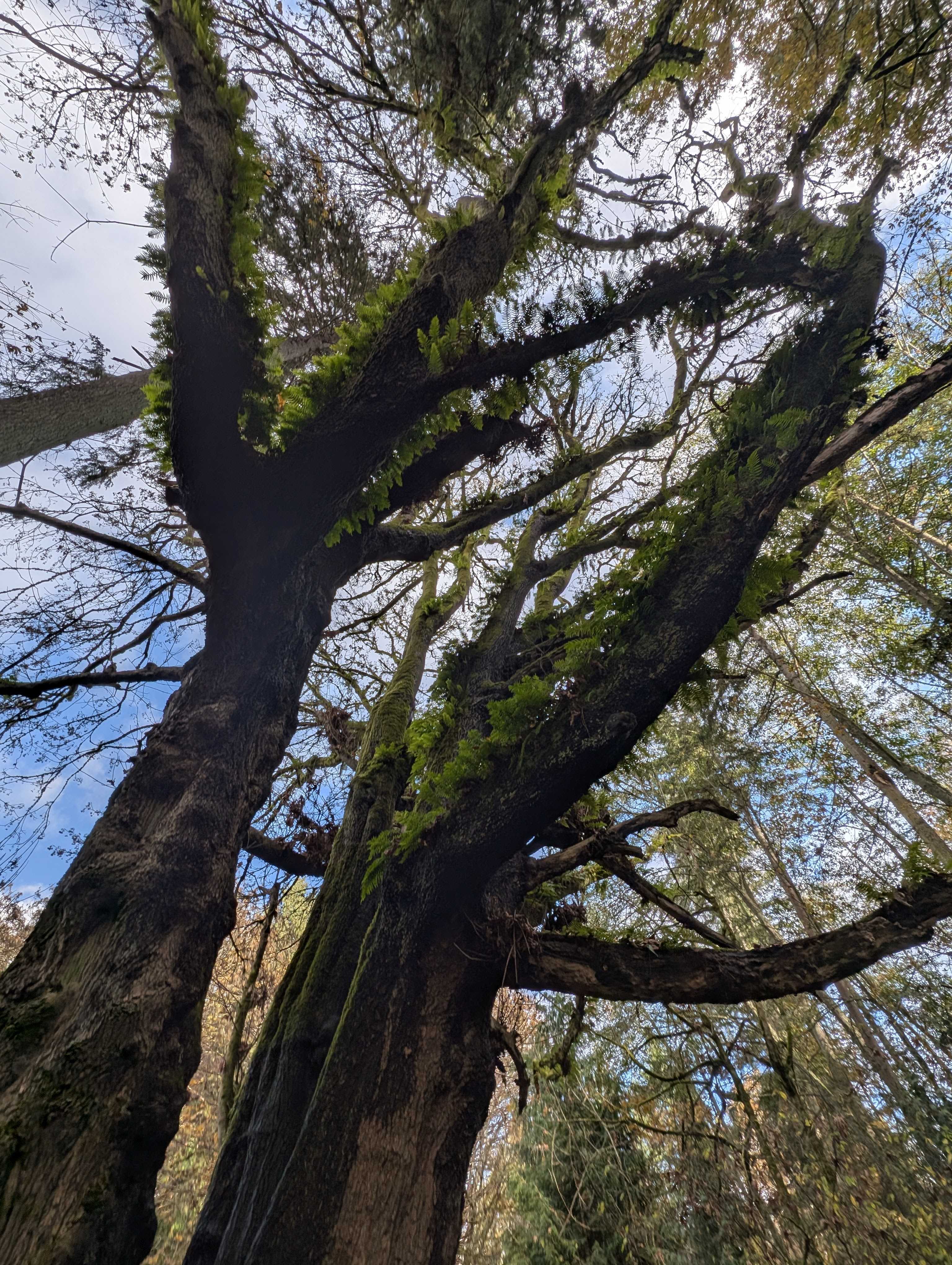Seeing the forest for the trees: A Midwestern transplant reminds me of the splendor of Washington’s old growth
I grew up in the Pacific Northwest. My partner is from rural Iowa. His excitement about our old-growth trees reminds me how lucky we are to have them.
I grew up in the Pacific Northwest. Ever since I was a kid, most of my memories were made along the shores of Puget Sound, most of my years spent in Bellingham and Seattle. My partner, on the other hand, is from rural Iowa. At the house where he grew up in, his closest neighbors were a quarter mile away, though you could easily see them across the flat farmland in the winter, when the crops were down. (You could even see the next neighbor over.)
When we met, he’d only just started exploring Washington’s forests and trails and was itching to see much more. One of the things he discovered early on was that he loved our trees. He had never seen trees like the ones here before.

The mossy trees in the Middle Fork Snoqualmie River area can be huge. Photo by Tiffany Chou.
“Towering, strong, wild, beautiful, ancient, magical, awesome, impressive, wow!” is how he described them to me when I asked.
“I love how every tree is unique and tells a story," he said. "But at the same time, it's also part of the forest's story. They tell you a lot by their size, the way they grow, where they grow, any scars or markings they have. And if you step back and look around, you can see the cycle of life in the forest and how trees play a key role in that.”
When we went on one of our first hikes together, I remember hearing him wax lyrical about how giant the trees we had in Washington were. He got excited every time we walked through a particularly mossy part of the forest.
With every hike we went on together, I realized more and more how I had lost sight of how cool this particular aspect of Washington was. On my recent hikes, I had been looking forward to the summit views, alpine lakes, ridge walks and wildflowers. At some point, unnoticed by me, I had stopped really seeing the massive tree trunks, towering canopies and verdant moss that envelop us on the miles we often hike through before we reach the big views.

Even the trees in my local parks, like Discovery Park, are massive. Photo by Tiffany Chou.
Some of our Washington hikes are fairly reminiscent of parts of the Midwest in a few ways — especially in Central Washington, like the Rattlesnake Slope Wildlife Area — and far be it from me to say there isn’t beauty in that area of the country in its own right — the Great Plains, Great Lakes, prairie, rolling hills and grasslands. Iowa was green in a different way, grassy with swaths of fields.
But seeing Washington through my partner’s eyes — a person who is still just starting to learn the beauty of Washington’s mossy old-growth forests — reminded me of how cool it is to be surrounded by trees that have been here for decades, if not centuries, before I came around.
I’m not a big snow adventurer, so many of my hikes this winter have been at lower elevations. Because of that, wide mountain views and sparkling (probably frozen) alpine lakes have been in short supply on my most recent hikes.
But what has been on just about every one of my hikes are tall trees wearing bright green mossy coats and huge trunks you can’t wrap your arms around. I would find them when I’d head further into the mountains, but also on my local trails — parks and green spaces within city limits — like Weowna Park, Discovery Park, Walker Preserve and even the University of Washington campus (which has its own tree tour!). They were easy to find, and difficult to miss.
Nowadays, I pay extra attention when I step under a huge Douglas fir or a tall cedar. I think about how long it must have taken for it to be here with us today. I remember that not everywhere has the dense rainforests and wooded trails that we do. And I often think to myself: How lucky am I to live amongst these gentle green giants!



Comments